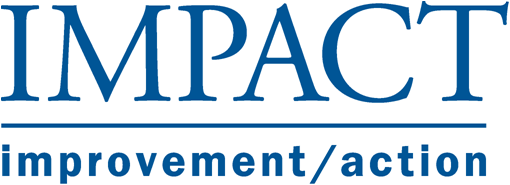Critical Leadership Processes for Achieving Great Results
Nancy Schlichting, President and CEO, Henry Ford Health System
Edwin A. Ness, President and CEO, Munson Medical Center
Maureen Bisognano, Executive Vice President and COO, IHI
Frank Sardone, President and CEO, Bronson Healthcare Group
Rick Norling, President and CEO, Premier, Inc
Moderator: James B. Conway, MS, Senior Vice President, IHI
I suspect there were many “amen’s” you had in listening to the findings of Maureen and Tom’s work on Systems for Rapid and Effective Change—can you discuss a few that jumped out at you?
In response to Maureen and Tom’s work on Systems for Rapid and Effective Change, the panelists agree that site visits are an effective method for engaging leadership in the organization. Ultimately, there is a consensus that the emphasis of their study was best placed on overall leadership opposed to individual processes.
Nancy Schlichting, President and CEO of Henry Ford Health System, explains that the focus at HFHS is on strategy, structure and culture. Currently, HFHS strategies involve the execution of an immense “no harm” campaign in the quality department, launching an equity campaign to battle racial disparities in healthcare. Rick Norling, President and CEO of Premier, Inc. describes that Premier uses an explicitly defined leadership system based upon Boeing that involves documentation of high-level processes, measuring results and continuous improvement.
Transparency is getting considerable attention, and stimulating lots of anxiety. Can you speak to the role it has played in your organizational improvement journey and success?
Ed Ness, President and CEO of Munson Medical Center, describes when Munson Hospital initially tried to implement processes improvements staff denied that there were any issues occurring in their hospital. As a result, the hospital launched an “It Happens Here” campaign video and newsletter to tell the stories of people who make errors and how it impacts their lives and the lives of the patients involved. Based upon story-telling, this patient safety program was distributed to 150,000 employees and created the impetus for change in their institution. This transparency has actually created a better environment and a culture of trust.
Engaging patients and families as partners in care and improvement is considered fundamental—how is your organization responding?
The emphasis on involving patients and families in the cycle of improvement and making sure staff knows how to use that information is a common practice among the panelists. According to Frank Sardone at Bronson Healthcare Group, Bronson is making an effort to ensure everyone understands what patient and family safety really means. His health system had an event where 5,000 employees spent four hours getting a background understanding of these principles. Bronson has a Patient Advisory Council with 40+ individuals who regularly share experiences with the board and, like patients at Munson Medical Center, are highly involved with helping with the design of facilities and forms.
What have you found as the most effective strategy for spread and sustainability of results?
According to Rick Norling, CEO of Premier, Inc., without both spread and sustainability there is a risk isolating excellence into certain units. Results should be clearly identified, measured and should flow from the vision. Culture is ultimately based upon values; the importance of establishing a culture of safety is lost if the organization is missing the value of “respect”. In addition, spread has to be encouraged or rewarded as well as acknowledged.
Transparency requires accountability and accountability may instill fear in many individuals. How to get past this fear in order to use transparency and data to its fullest?
Ed: Usually problems result from systems, not individual people so the issue is to determine what went wrong/what needs to be fixed? CEO involvement may be necessary to kick-off large discussions (sentinel events, retained sponges) to thank individuals for coming together to talk about what has happened. Transparency itself is a behavior and reinforcing it is key.
Nancy: Look at leadership-maybe there is an individual leader (middle/frontline management) who doesn’t align with the culture of the organization or is not supportive with the approaches and who is holding back the progress. Case studies show that issues are not black and white; disagreement does occur and it is challenging to balance the line between accountability and transparency.
Frank: Creating a blameless culture, increasing the number of issues reported and shifting to a just culture is essential. Even with system issues it’s necessary to have accountability at the individual level and identify standards among staff at all different levels of patient care.
Maureen: Systemic variation is tolerated in healthcare more than in other industries. Sometimes fear is necessary to create a will or motivation to change and improve performance (and thus create accountability for transparency)!
How to deal with legal counsel in terms of transparency?
The panelists suggest that sometimes you must ignore legal advice to not disclose (and to essentially bury) adverse events. In fact, studies have suggested that the number of malpractice lawsuits actually decreased in the past years during which levels of transparency have burgeoned. In many hospitals, malpractice expenses are currently very low, and it is important to gather stories from interactions with patients and families to reinforce the fact that transparency is effective.
Tuesday, June 2, 2009
Subscribe to:
Post Comments (Atom)

No comments:
Post a Comment